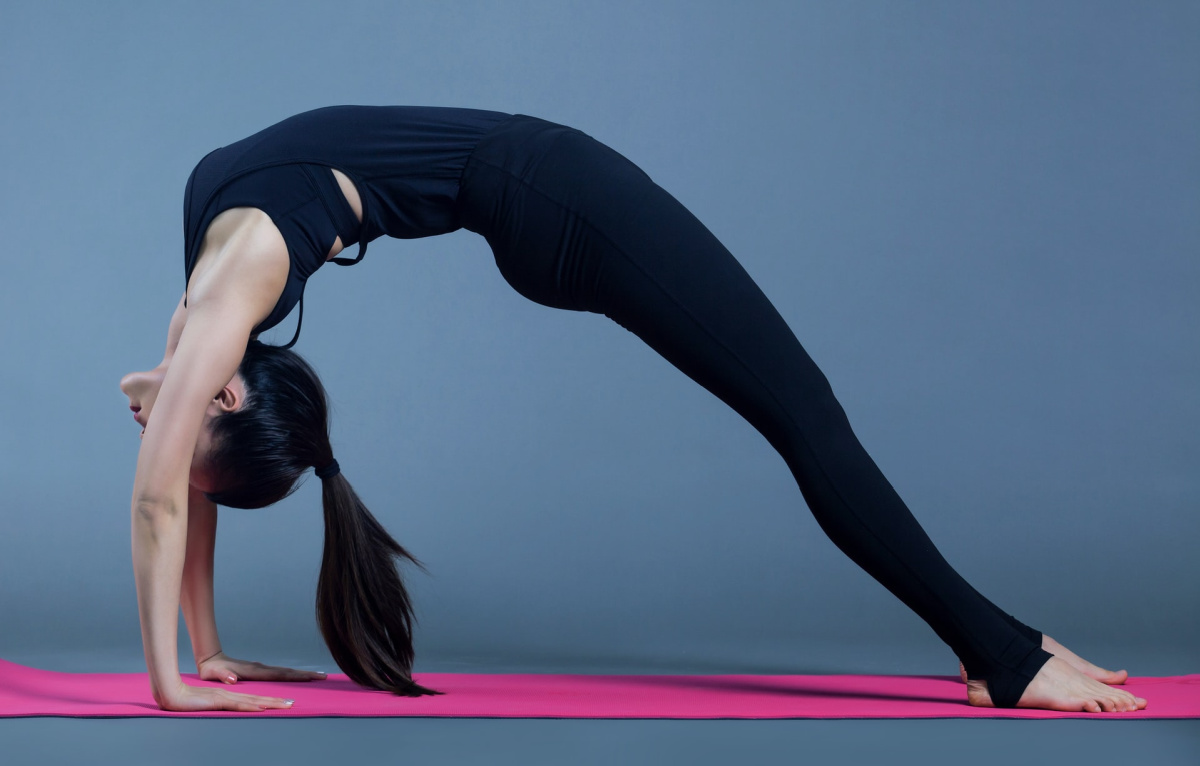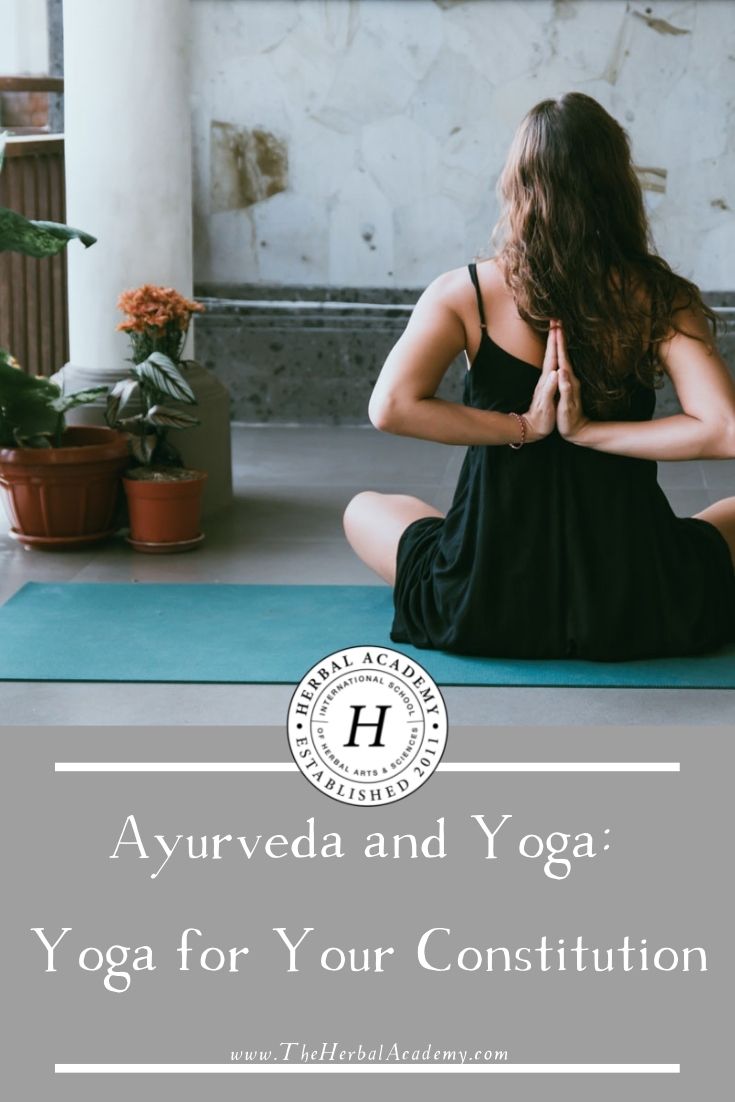
Ayurveda and Yoga: Yoga for Your Constitution
“Ayurveda is a paradigm, not a prescription” is a phrase that I commonly emphasize in my introduction to Ayurveda public lectures. Ayurveda is integrated into the medical system in India and if you work with any ayurvedic practitioner anywhere in the world, they will likely suggest herbs, dietary modifications, and other practical measures. However, Ayurveda functions holistically; it is a path to optimal health and a tremendous technology for self-understanding. This model of understanding can be applied to anything that you do. In this article, I will offer a perspective on Ayurveda and yoga—how you can bring a deeper awareness to your yoga practice by looking through the lens of Ayurveda. (Even if you aren’t that into yoga, you will probably learn something!)
There are any number of Ayurveda books that suggest specific yoga poses to balance vata, pitta, and kapha. Though these books are written by experts and there is certainly merit to these yogic protocols, my intent here is to take a wider angle view. Pulling back the curtain a bit, I offer an approach for practicing yoga with an ayurvedic understanding.

Ayurveda and Yoga: Understanding Your Tendencies
A fascinating tenet of Ayurveda is that nothing is right for everyone and everything is right for someone. This phrase may sound radical, but it points to Ayurveda’s highly individualized methodology. By understanding your constitution, patterns, and tendencies, you can make thoughtful decisions that help keep you in balance.
For instance, if you naturally run warm, you will want to emphasize foods, herbs, and lifestyle practices with an overall cooling effect. On the other hand, if you have a naturally cool constitution you will want to place greater importance on foods, herbs, and practices that encourage warmth. For more reading on the three doshas and basic principles of Ayurveda, I invite you to read my blog post Introduction to Ayurveda: What’s My Dosha?
Much can be said (volumes and volumes of books, in fact!) about foods and herbs that balance the three doshas. However, our focus here is on adapting your yoga practice to be a better fit for your constitution and tendencies—so let’s talk yoga!
Before we dive in, I would like to mention that this article is geared toward readers who have some experience with yoga. I offer both the English and Sanskrit names for the poses. If you are unfamiliar with the asana names, the book, Light on Yoga by B.K.S. Iyengar is a wonderful resource. Also, you can get a quick snapshot of these poses now on the web. Above all, it is always ideal to work with an experienced yoga teacher. Fortunately, even if you live in a remote area, these days many dedicated and experienced yoga teachers offer online classes and workshops. In fact, I teach online yoga classes for students of all experience levels through my yoga studio, Iyengar Yoga Asheville.

Ayurveda and Yoga For Vata Dosha: Calm and Ground
Vata dosha, composed of air and ether, is naturally light, cool, subtle, dry, and mobile. People who have a predominant vata constitution may be quick-moving, adaptable, versatile, and tend to like movement. These are all wonderful traits. Yet, all that wind and movement can become problematic for vata types if not balanced by steady, grounding routines. Vata types may be drawn to constant motion. Therefore, practices that encourage a sense of grounding, calm, and regularity are supportive for them. Think standing poses, restoratives, forward bends, and placing sandbags and other weights on the body—and generally slowing down.
This is not to say that vata types should never engage in faster-moving practices or invigorating poses, such as backbends. But, these naturally fast-moving air types do have a tendency to seek constant stimulation. Therefore, interjecting practices of stillness—and opportunities for inner quiet—is very important for balancing the constant movement of vata dosha.

In addition, practices that connect vata types to the earth element are helpful. Standing poses in particular are good for this. The warrior poses, Triangle Pose (Utthita Trikonasana), Downward Dog (Adho Mukha Svanasana), and Tree Pose (Vrksasana) are good examples. Standing poses have a grounding and strengthening effect which balances the lightness of vata dosha.
Also, some hard work is good for vata types as it helps them sense, and really drop into, their bodies—something they may struggle with (vata types can tend to live in their heads and get absorbed by thoughts and ideas). At the same time, these airy types should be careful not to completely wear themselves out. They are prone to overdoing it and running off nervous energy.
Another important factor to consider in thinking about yoga for vata dosha is the part of the body that is ruled by vata—the colon. Constipation and bloating are common imbalances caused by excess vata dosha. Therefore, asanas and other practices that relax and tone the lower abdomen are helpful. Poses such as Reclined Hero Pose (Supta Virasana) are especially good for regulating the apana vayu (downward flow of energy that rules elimination). Also, Reclined Bound Angle Pose (Supta Baddha Konasana) is good, as are twists, as long as there is not acute constipation or diarrhea. 
Ayurveda and Yoga for Pitta Dosha: Keep Cool
Whereas vata dosha runs cool or even cold, pitta dosha generates heat. Pitta-types tend to run warm—in more ways than one! Aside from a warmer body temperature, these fiery types are usually quite driven and competitive—and when out of balance are prone to heated emotions such as anger, rage, and judgement. For more on managing pitta dosha through diet, herbs, and lifestyle, I invite you to read my posts Mood and Mental Support for Pitta Dosha and Cooling Recipes for Managing Pitta Dosha.
Yoga practices that emphasize cooling, lunar energy are balancing for pitta dosha. Again, this doesn’t mean that pitta types should completely avoid hard work and sweat. In fact, a healthy dose of sweaty movement can be helpful for pitta-types in relieving their mental stress. However, it is important for them not to get caught up in competition or comparison. Also, learning to tune into the messages that their body is sending will be helpful—rather than pushing through the body’s warning signs. Sometimes pitta-types need to learn to slow down and listen internally before their bodies are screaming at them.
Forward bending poses generally have a cooling effect on the body and mind. In fact, supported forward bends such as a supported Stretch of the West Side of the Body (Paschimottanasana) where the forehead rests on a chair or bolster (see image here) can be very helpful in soothing headaches, and are indicated for conditions such as high blood pressure and chronic tension.
Inversions with a cooling, lunar energy such as Supported All Limbs Pose (Salamba Sarvangasana) and Formation of a Bridge Pose (Setu Bandha Sarvangasana) are also very important for pitta-types. Really, these poses are extremely beneficial for the endocrine system and prepare the body and mind for the breathing practices, so they are important for all yoga practitioners. However, pitta-types, in particular, will benefit from not skipping over these nourishing poses that help quiet the mind and draw the focus inward.
In general, if you have a predominance of pitta dosha in your constitution (or if it’s pitta season), be cautious of not overheating your body and mind. Also, keep an eye on your competitive edge. Competition and drive can propel us to do great things, but be wary of that internal fire overriding your deeper wisdom and sense of wellbeing.

Ayurveda and Yoga for Kapha Dosha: Move It Out
If pitta types need to be cautious of not overdoing it, kapha types have great endurance and can generally push themselves harder. Made of the earth and water elements, kapha dosha is slow, smooth, cool, and heavy in nature. Kapha types tend to gather their energy gradually in the morning and into the day and they like routines and creature comforts. Once a kapha type creates a routine, they have a great possibility to stick with it. So, if a kapha type is set in a good daily yoga practice, they will likely stick with this routine in the long haul.
However, kapha types need to be wary of slack and sluggishness, or the more grounded aspect of inertia. Not overdoing it is one thing; but you can also become too settled. There is a term called “tapas” in yoga which means discipline or burning zeal. It is the fiery component of the practice that allows the practitioner to transform themselves and to burn away impurities—physically and psychologically. Those with a lot of kapha in their constitution may need support in cultivating and maintaining tapas. As one of my teachers says, “The comfort zone is illusion. When you move out of your comfort zone, that is reality.”

What does this mean in terms of an asana practice? Get moving and get sweaty! Kapha types tend to have great endurance, so they can sustain a rigorous physical practice. Standing poses build strength and heat and test the body’s endurance. Backbends/back extensions such as Bow Pose (Dhanurasana), Camel Pose (Ustrasana), and Upward Facing Bow Pose (Urdhva Dhanurasana) are great for kapha types as this category of asana has an uplifting, expansive affect. Also, the fire element is predominant in backbends, and practicing backbends cultivates strength, willpower, and an expansive consciousness.
Variety and spontaneity are also balancing for kapha dosha. As I mentioned earlier, kapha types love their routines—to their betterment and detriment! Practicing yoga at the same place and time every day is a great idea for all doshas. But, kapha types in particular need to be careful not to get stuck in a rut. They should make sure that they are practicing new and challenging poses and are mixing up their practice sequence and not doing the same poses day after day.Kapha types may want to seek out a teacher to challenge them to move out of their comfort zone (in a healthful way and with awareness, of course).
In Closing,
Ayurveda and yoga are vast and deep disciplines. You could immerse yourself in these two subjects for your entire life and barely scratch the surface of what these traditions have to offer. If you have some familiarity with both, it may be time to begin to experiment with the intersection between Ayurveda and yoga. These two fields have a tremendous capacity for synergy and the more that you get to know both, the more you may recognize the inherent wisdom and harmony in these ancient practices.









